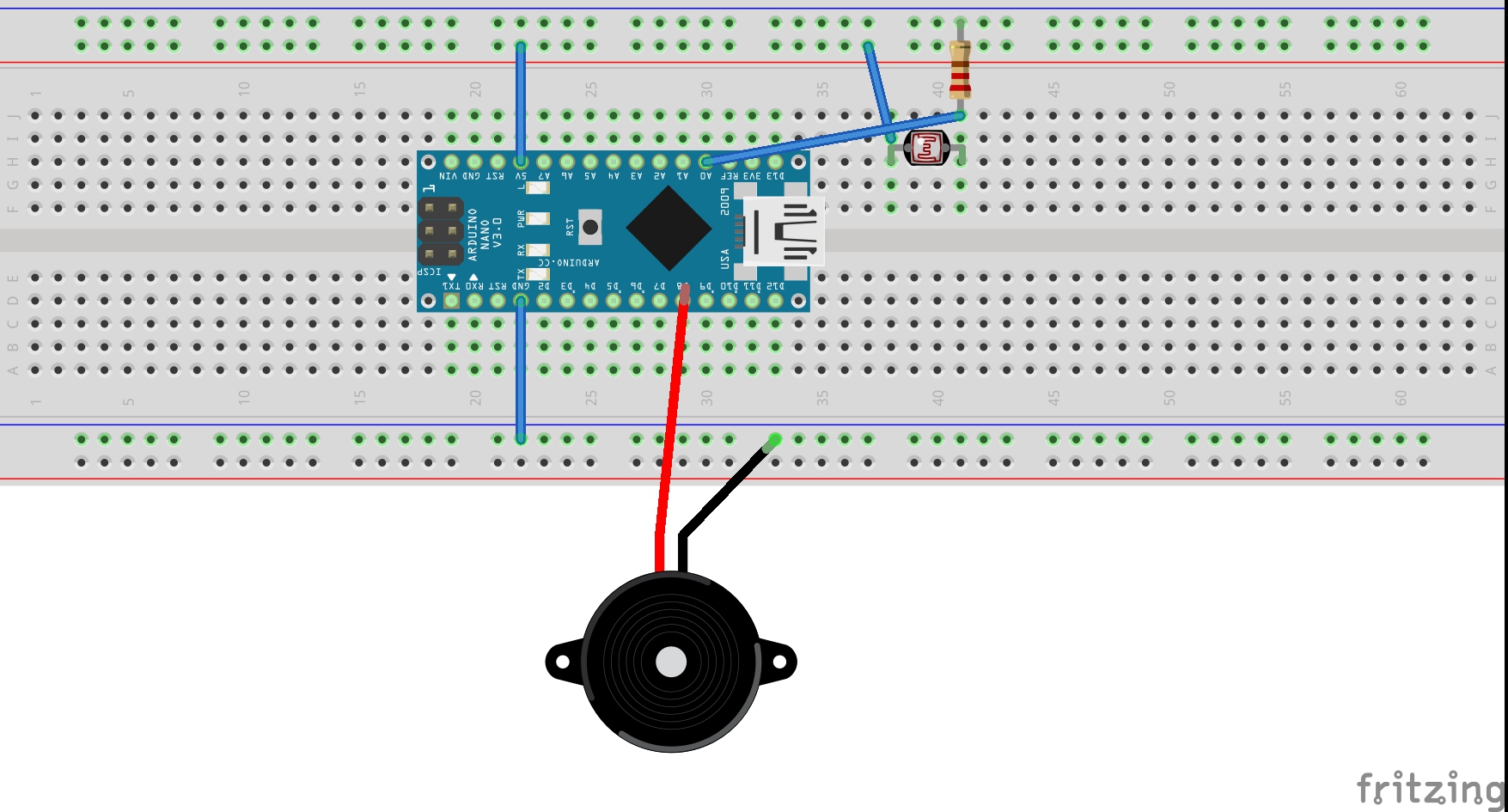The nano light theremin is a variation of the light theremin project described in the starter kit. I liked the project so much, I decided to build a more permanent variation. I soldered a piezo buzzer, resistor and photocell onto a PCB and added wires.
If you use a PCB: one leg of the 10 kOhm resistor is connected to one of the photocell's legs. A wire connects the other leg of the photocell with the ground pin of the piezo buzzer.
The project uses the same code as the light theremin project in the starter kit. Once you have uploaded the code, you might want to wave a hand over the photocell and notice any variations in sound.
The prototype features jumper wires. If you are using a solderless breadboard, you can place the Nano in the middle of the board itself. Add the lead from the resistor to A0 and the power (+) lead from the buzzer to pin 8.
As another variation, you might consider soldering the leads for A0 and pin 8 directly onto the Nano itself, as I have done. If you would rather preserve the Nano for other projects, perhaps using a solderless bread board is the best option.











Comments